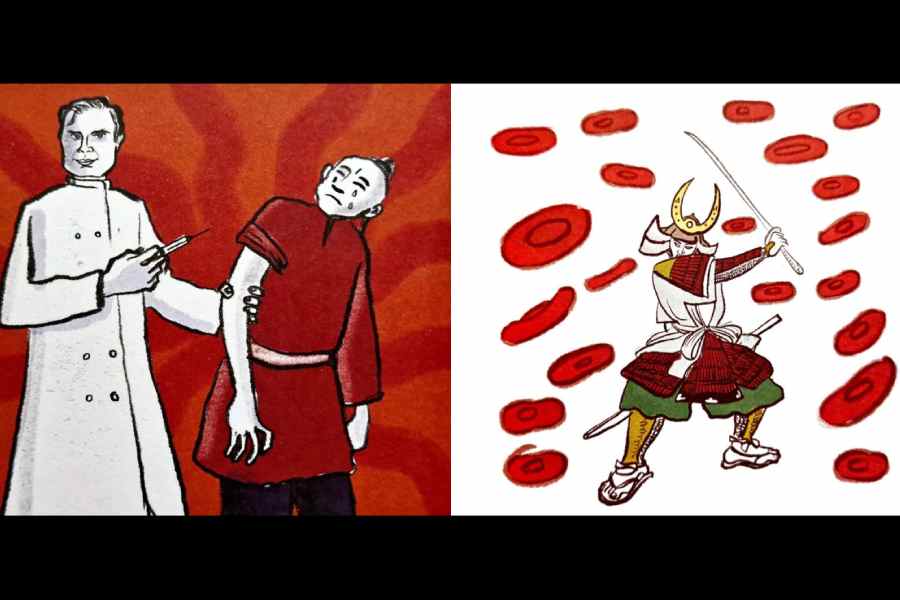THE MORAL CONTAGION
By Julia Hauser and Sarnath Banerjee
Harper Collins, Rs 699
When the Covid-19 pandemic struck, few could comprehend its enormity or think of ways to cope with it. People often turned to the past for clues. A slew of books — fiction and non-fiction — were published on the plague, the flu, micro-organisms like bacteria and viruses, and the history of how humans dealt with past pandemics. Julia Hauser’s book is the latest offering in this genre. But Hauser’s lens is not focused on the scientific or the literary; she tries to trace how the disease left not just death but also social, religious and moral upheavals in its wake by zooming in on the bubonic plague and following its trail of death from 6th-century Constantinople to 20th-century Africa.
Spanning a little over 100 pages and richly illustrated by the graphic novelist, Sarnath Banerjee, the book keeps things simple. Hauser does not overwhelm readers with dates, facts and figures. Her protagonists are ordinary citizens and her narrative style is richly anecdotal. Given the microhistories in this book — the story of a mother and daughter in a quarantined harem in 18th-century Aleppo, for instance — it is, at times, impossible to tell where facts end and fiction begins.
Time and again, we find historical parallels to what we have witnessed first-hand during the Covid-19 pandemic — fear leading to segregation and prejudicial ideas of purity/pollution, which, in turn, heaped greater suffering on the poor who lived in dingy, squalid quarters than those who resided in luxurious country estates. Mass graves and unidentified dead bodies had infested 14th-century Florence, evoking in readers the memories of unclaimed corpses in the Ganga in 21st-century India. Asians, especially the Chinese, bore the brunt of discrimination in San Francisco in the 1900s as bearers of disease much like their contemporary counterparts did in present-day America. While these parallels are illuminating, they are not particularly novel and have been written about in some detail since the onset of Covid-19.
What makes Hauser’s book appealing are her dry humour and skills as a raconteur — she packs in a lot of information and opinion without ever sounding didactic. Hauser’s humour is complemented — even enhanced — by Banerjee’s illustrations (pictures). Be it the recreation of plague posters of skeletons luring people to death with flutes or the portrayal of the Japanese microbiologist, Kitasato Shibasaburo, as a samurai fighting the plague bacillus Banerjee’s caricaturish style is a perfect match for Hauser’s narratorial voice. What must also be commended is the artist’s attention to historical detail. His light-hearted touch notwithstanding, when it comes to illustrating settings such as Bombay during the time of the bubonic plague of 1896 and the Chinese ghettos of California in 1899, Banerjee excels in resurrecting those eerie times faithfully and in great detail.











